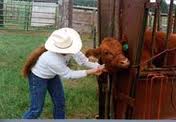Preconditioning beef calves: the numbers don’t lie!
Calf preconditioning reduce calf health risk, encourages repeat buying and increases farm income.
Nearly all cow/calf producers will say their goal is to sell calves for a premium on sale day. However, most buyers will say their objective is to buy healthy calves as economically as possible. While these may seem like conflicting interests, both buyers and sellers can achieve their objectives with calf preconditioning programs.
Studies over the past decade summarizing the Pfizer Vac-45 or comparable programs have shown that preconditioning programs can help cow/calf producers market calves at or near the top of the market. In numerous studies pre-conditioned calves sell for $5-10/cwt. above non pre-conditioned calves. Conversely, buyers have become leery of preconditioning programs with incomplete and poorly defined protocols or insufficient documentation.
 Evidence from buyer surveys clearly show they pay more for preconditioned calves that include clear documentation of the health and management program for the following reasons:
Evidence from buyer surveys clearly show they pay more for preconditioned calves that include clear documentation of the health and management program for the following reasons:
- Decreased morbidity rates
- Increased net returns in feedlot cattle compared with cattle of unknown vaccination history
- Increases average daily gain of .1-.3 lb/hd/day if preconditioned for 45 days or longer
- Increased feed efficiency when preconditioned for 45 days or longer
- Decreased medication cost when preconditioned for 45 days or longer
- Decreased death loss of 3.1 percent when preconditioned for 45 days or longer
Preconditioning is easier than you might think: Programs generally include vaccination, deworming, dehorning, castration, water and feed bunk training, and weaning (45+) days prior to sale. Below are some good guidelines to assist in planning your program.
- Plan ahead by scheduling weaning, and processing activities
- Consult your veterinarian to develop a veterinarian-client-patient relationship, your extension educator or marketing agent for health protocol recommendations
- Purchase vaccines and supplies in advance and from reputable companies
- Be sure you handling facilities are in proper working order to ensure efficient ease of animal handling and to protect animals from unnecessary bruising and injury
- Minimize stress of weaning, vaccinating, deworming, etc. by spreading out the activities
- Be sure your mineral program and rations are balance to achieve performance goals
- Consider third-party verification of your program
- Keep records by documenting your program and provide records to prospective buyers
- Always follow national or state Beef Quality Assurance (BQA) program guidelines
Preconditioning programs do require additional planning and management. Despite this, calf preconditioning is a smart choice for the cattle industry and for the buyer and seller. Finally, preconditioning can help producers enhance the health of their cattle, encourage repeat buying and increase the bottom line for buyers and sellers. The numbers don’t lie!



 Print
Print Email
Email